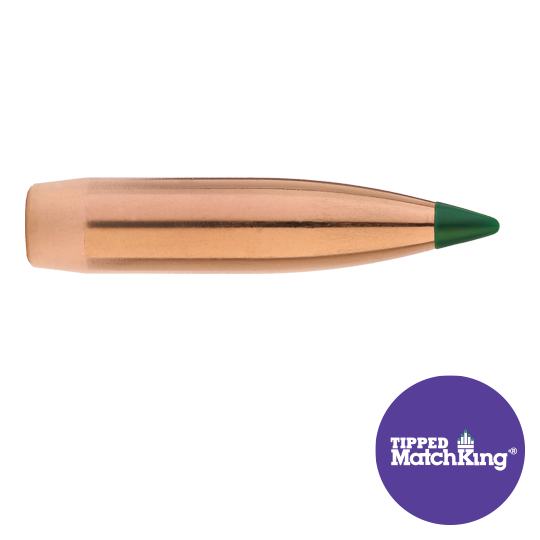Formidilosus
Super Moderator
- Joined
- Oct 22, 2014
- Messages
- 8,173
What kind of deer is that? It’s got hair like a rusa but looks too small.
Found this on Sierra's website? WTF doesn't make sense at all does it?
"While they are recognized around the world for record-setting accuracy, MatchKingand Tipped MatchKing
bullets are not recommended for most hunting applications. Although MatchKing
and Tipped MatchKing
bullets are commonly used for varmint hunting, their design will not provide the same reliable explosive expansion at equivalent velocities in varmints compared to their lightly jacketed Hornet, Blitz or Varminter counterparts."

The .223 77 SMKs aren't tipped like the 95 grain SMKs
I have shot a few animals with the new tipped 230 SMKs. They are NOT good for hunting. I shot a bull and didn't find him for six days. When I did find him it looked like he was hit twice behind the shoulder but the bullets didn't open.

This was taken directly from their TMK 224 bullet page tho. Based on others view in this thread, they appear to be very effective. Confusion setting in...

.22 Cal / 5.56mm 77 Gr. TMK - Sierra Bullets
Sierra has enhanced a segment of the MatchKing line by adding the acetal resin tip, thus crowning the Tipped MatchKing (TMK) bullet line. The major advantage of adding a tip to the bullet is the reduction of drag, producing a more favorable ballistic coefficient. Another benefit is reliable...www.sierrabullets.com
The 230 grain SMK is not “tipped” with the acetal resin (plastic) tip.
The plastic tip makes a huge difference in hunting performance.
This was taken directly from their TMK 224 bullet page tho. Based on others view in this thread, they appear to be very effective. Confusion setting in...
This was taken directly from their TMK 224 bullet page tho. Based on others view in this thread, they appear to be very effective. Confusion setting in...

.22 Cal / 5.56mm 77 Gr. TMK - Sierra Bullets
Sierra has enhanced a segment of the MatchKing line by adding the acetal resin tip, thus crowning the Tipped MatchKing (TMK) bullet line. The major advantage of adding a tip to the bullet is the reduction of drag, producing a more favorable ballistic coefficient. Another benefit is reliable...www.sierrabullets.com
A couple thoughts that hopefully may help with the seemingly conflicting info. Match bullets are not designed for terminal performance, they are designed for consistency in hitting a target. Once that target is hit, they have done their job. A hunting bullet is also designed for accuracy, but has another important job, performing in the terminal phase inside the animal.
Generally speaking for big game hunting, the smaller the game the better a match bullet will seem to perform, the heavier for caliber a match bullet is the better a match bullet will seem to perform. A 77 gr. 22 caliber match bullet is heavy for the caliber and if used on smaller big game can be deadly. Once game gets to a certain size, all bets are off, with any match bullet imo. Reference the elk issue related above.
Match bullets will tend to have jackets designed for consistency, often thinner, rarely will they have structures designed to control expansion. A relatively thin jacket is thought by some to aid accuracy, it can swage to bore size easier than a all copper bullet. That’s a reason the mono bullets and those with solid shanks almost always have groves now, gives the metal someplace easy to go.
So, imo, it’s a brave trusting soul that uses match bullets for hunting. If you use them smartly, you are probably OK. For me, I am much better off to use a hunting bullet for hunting, give up a little accuracy maybe, and practice with it in the field in hunting conditions (wind). A shooter with a 1 moa rifle that knows how to call the wind very well, will out shoot a shooter with a .5 moa rifle that is not wind savvy, when shooting at longer range. Now I’d prefer a .25 moa rifle and excellent wind doping skills...
Shooting bug holes will not necessarily put meat on the table, being able to place a hunting bullet in the vitals under field conditions will. My two cents, use hunting bullets for hunting, get acceptable accuracy, and practice lots under field conditions. One mans opinion, hope it was helpful, ymmv.

There is a reason the 77 TMK was developed, and it wasn’t for target shooting, but it had to be classed as such so it wouldn’t upset the pacifists
I guess we will have to agree to disagree. From what I have witnessed. If you take a 180 Accubond verses a 215 or 230 Berger out of a 300 win mag and shoot elk between 100 to 600 yards the internal damage will be greater from the 215 than the 180. Which is what I want. The further you go out the more the 215 shines. I’m not saying hunting bullets don’t work, they definitely do. I am saying the 215/230 have worked better for me and the people I hunt with.
To get on back track I don’t know why this wouldn’t be the same with the .223 and heavy for caliber match bullets within reason. Although some people’s reason is different than others
Sent from my iPhone using Tapatalk